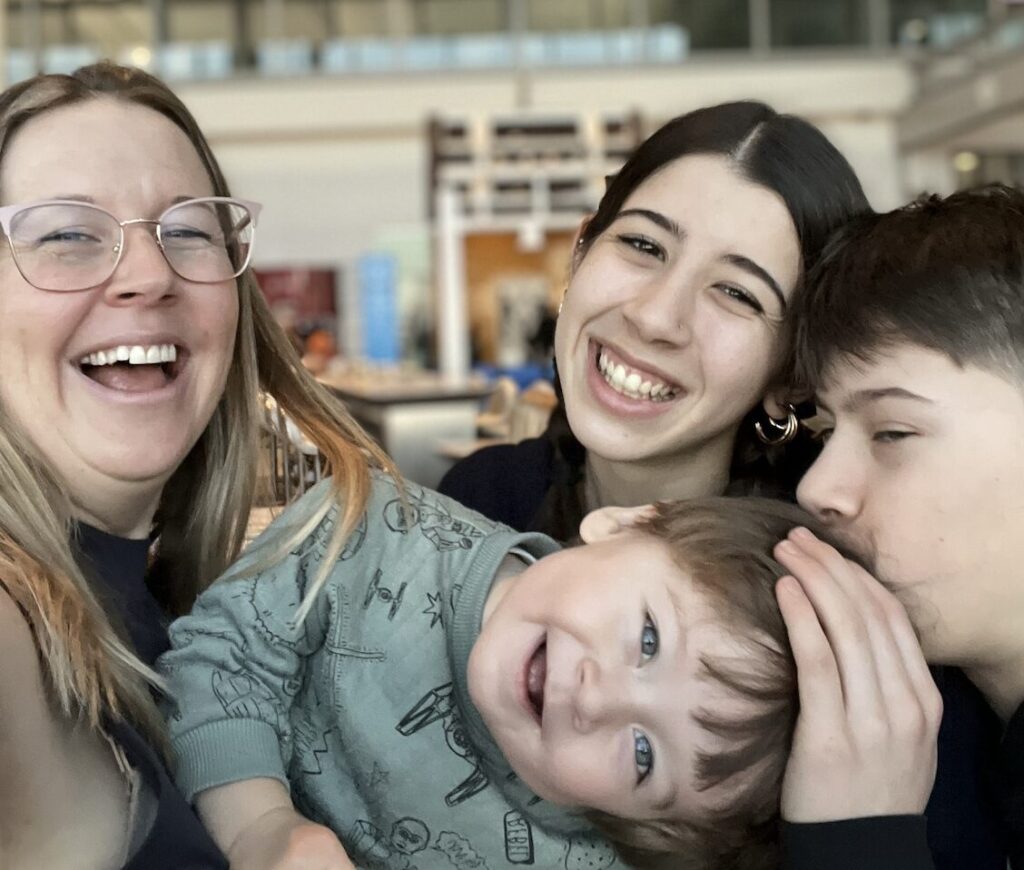 Sandra Charlson (name changed by request)
Sandra Charlson (name changed by request)
first realized that her nine-year-old son Cole was
terrified of speaking in public when he entered
Grade 1. He got a nosebleed every time he had to
speak in front of the class. Presentations weren’t
the only problem. He was in a car accident when
he was five and now has a phobia about congested
traffic. He feels anxious when he thinks the driver
is going too fast.
All children have fears, but Cole’s nosebleeds
and inability to sit calmly in the car were a cause
of concern to Sandra. “We all have fears,” says
counsellor Andriana Mantas. However, fears of
strangers or a particularly vicious-looking dog are
spontaneous and reactive. Phobias, on the other
hand, last several months or years, and even into
adulthood. “What distinguishes a fear from a
phobia is the frequency, intensity and duration of
the fearful response.”
Why do we have phobias?
While phobias can sometimes be explained by a
traumatic experience, such as Cole’s fear of traffic
and fast-moving cars, others are simply a result of
a child’s natural temperament.
The good news is that phobias can dissipate as
children get older; but if left untreated, they may
begin to interfere with daily life, preventing the
person from participating in activities where they
may have to confront their fears.
How can you help?
Andriana says it’s important to acknowledge
children’s fears, but she encourages parents
not to over-coddle. “Parents can unwittingly
reinforce a phobia by avoiding the scary situation
or showering their child with affection when
they get upset.” While hiding from the fear may
relieve anxiety in the short term, it can also create
lifelong habits of avoidance. “What we want to do
is acknowledge the fear without giving it too much
power,” says Andriana.
Tom Ollendick, psychologist and director of the
Child Study Center at Virginia Tech who studies
fears and phobias in children, says the best way
to help kids overcome their phobias is through
graduated exposure. “We encourage parents to
expose their children to the things that they’re
afraid of in a careful, graduated and supportive
kind of way.”
A child with a phobia of dogs, for example, may
benefit from looking at pictures of dogs or going to
a pet store to look at dogs behind a protective glass
barrier before coming face to face with one. Tom
encourages parents to participate in the process
of graduated exposure, guiding their child toward
the object of their fear and providing support.
However, he warns that children should never be
forced to confront what frightens them, as this can
accentuate the phobic response.
Sandra has implemented strategies of
graduated exposure while helping her son
overcome his phobia of speaking in public by
asking him to write out what he wants to say and
having him practise it at home in front of her. Cole
has also enrolled in activities such as Cub Scouts,
where he has to do mini presentations in front of
a small number of people to earn badges. “Being
prepared has helped tremendously,” she says.
Andriana says relaxation exercises can also
help calm phobic reactions. “Breathing deeply will
bring the needed oxygen back into the body and
stop the heart from racing,” she says. Breathing
also helps to focus on the present, rather than
what might happen, which is at the heart of a
phobia.
When should you seek help?
While fears and phobias are a normal part of
childhood development, seek professional help if
the phobia begins to impede your child’s daily life.
Increased clinginess, falling grades and a loss of
social connections can signal that a fear is taking
over. “If a fear of dogs means you child can’t go out
at recess because the neighbour’s dog can be heard
from the schoolyard, it’s time to call in the experts,”
says Andriana.
What children fear the most?
A 2009 Virginia Tech study
ranked the top four phobias
among school aged children as:
- the dark
- storms
- dogs
- costumes or characters
“These represent 75 percent
of childhood phobias,” says
psychologist Tom Ollendick,
who led the study.
A phobia of dogs may come
from a traumatizing run-in
with a vicious canine, but Tom
says fears of the dark, storms
and costumed characters are
likely a result of children’s
lower cognitive abilities. “As
children are developing,
they’re not able yet to fully understand
the characteristics of
storms or of the dark, so they
represent scary things.” Not
knowing who’s inside a costume,
or what causes creaking
sounds at night can be downright
terrifying, but learning
how shadows work, where
thunder comes from and who’s
behind a mask can be the fir st
step towards overcoming the
phobia and explains why these
phobias dissipate with age.
Originally published in ParentsCanada magazine, May/June 2013.









